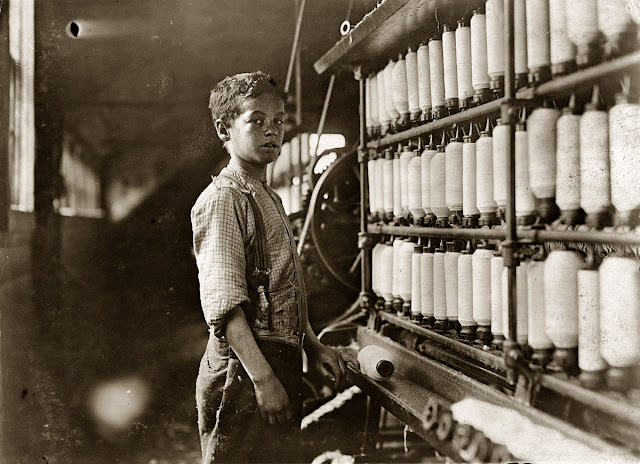In this haunting flashlight photograph taken in 1908, children are seen heading to their night shift at the Whitnel Cotton Mills in North Carolina. It’s 6 PM on a cold, dark December evening. Their shift will last a grueling 12 hours—through the night—until 6 AM the next morning.
These young workers, some barely more than children, were part of the labor force that powered America’s industrial boom. Lewis Wickes Hine, a pioneering social reform photographer, used images like this to expose the harsh realities of child labor and advocate for change. His powerful documentation played a crucial role in sparking labor reforms that eventually led to child labor laws across the United States.
At that time, American law-makers weren’t completely apathetic towards this situation, and many U.S. states had already passed laws that regulated the employment of children in industrial settings. Most companies however chose to ignore these laws. It wasn’t an uncommon notion that hiring these children would help out the poorer families in the state.
While Lewis Hine was documenting these child laborers, many employers passed them off as at least 16 years old. In reality, children as young as eight were already hired for different jobs.
Mr. Hine studied sociology and later on became a teacher. He encouraged his students to use photography as a tool for their education. Later on, he realized that photojournalism was his true calling.
He first documented the arrival of immigrants in Ellis Island in 1904. He continued his photography by following these immigrants into their crowded tenements. It wouldn’t be long after starting on this path that his work led him to the working conditions of the poor, including children.
His groundbreaking work on child labor began in 1908 at the invitation of the National Child Labor Committee. They believed that child labor would only provide so much income for the families in the short run and wouldn’t lead them out of poverty in the future. Instead, a proper education was the true way for improving the lives of the children.
Mr. Hine set out to different factories, mines, and plants in many states to document these child workers. It is truly a testament to his skill and determination that he was able to capture so many moving images at the risk of his own life; the presence of a photographer with the aim of exposing these exploited children would have been an unwelcome prospect for these companies, to say the least.
Hine’s photographs put hundreds of faces to the names of these child laborers that the middle and upper classes had only heard about in passing. His invaluable work paid off as the NCLC successfully lobbied for federal laws to protect the children, although it would be many years before true change would come.
Today, Lewis Hine is remembered for helping change the working conditions of everyone across America through his unflinching photographs. Then NCLC honors his name through the Lewis Hine Awards which recognizes those who have helped children and the youth.
























.jpg)





0 comments:
Post a Comment